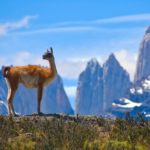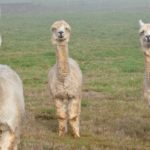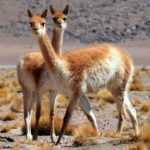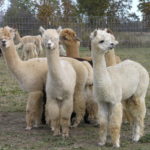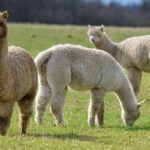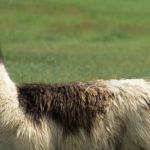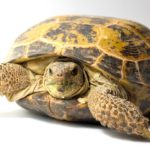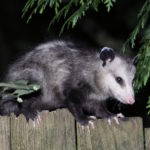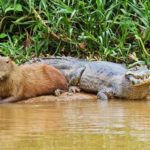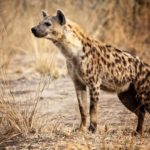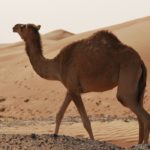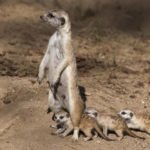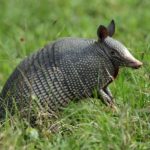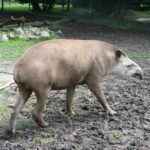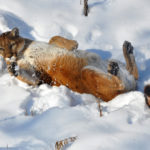Guanaco – Description and lifestyle
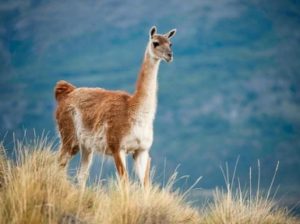 Guanaco is a mammal of the camelidae family, the ancestor of the domestic llama. The word guanaco itself comes from wanaku, the name of this animal in Quechua. The habitats of guanaco stretch from the south of Peru to Tierra del Fuego – these are mountain systems, savannas, and desert zones.
Guanaco is a mammal of the camelidae family, the ancestor of the domestic llama. The word guanaco itself comes from wanaku, the name of this animal in Quechua. The habitats of guanaco stretch from the south of Peru to Tierra del Fuego – these are mountain systems, savannas, and desert zones.
Russians are more familiar with the llama living in South America, which can be seen in any zoo. So guanaco is a variety of llama, although zoologists consider them a separate species.
Four species of animals resemble each other in South America. These are llama, alpaca, guanaco and vicuna. These animals belong to the family of camelids, although they do not have any humps on their backs, the most noticeable differences between a camel and any other representatives of the animal world.
By their size, shape of body and legs, these camel relatives are more likely to resemble large sheep, and only a long neck is more like a camel. Everything else, their way of life, their food, habits and behavioral peculiarities are special in no way similar to anyone else. They are not very tall, on average about 130 centimeters to the withers. They have a small but long head with pointed ears. The hair is shaggy, yellow-brown in color, on the head and neck turning into ash-gray. The fur is dense and thick, it protects well from temperature extremes.
Folded guanaco is quite elegant, similar in shape to an antelope. They run well and can reach speeds of more than 50 km / h. Guanacos prefer to live in the open viewing areas, so for them running is life, because they also have enemies and the main enemy is a quick cougar, from which you can only escape by flight. But they just as easily overcome mountain slopes, they are not afraid of either rocks or quicksand. In addition, they swim well, eyewitnesses said that they saw a group of guanacos sailing from Cape Horn to the islands a few miles away.
These unusual animals live only in the mountains at an altitude of about 3 thousand meters. The above is easy, even up to 5500 meters is not the limit for them, but the lower is uncomfortable for them. These animals, historians claim, have been around for more than forty million years. These ancient camels in the ice age became extinct, and those who survived moved to the mountains. For a long time in the mountains, they adapted to low pressure and low oxygen content in the atmosphere.
The lack of oxygen in the mountains at a high altitude does not allow flat animals and humans to endure normal physical activity. Any work, let alone carrying heavy loads, is difficult. And these descendants of the ancient camels, at least something. In these extreme conditions, they can easily move quickly without experiencing any inconvenience. This feature of theirs was noticed by the ancient inhabitants of these places of the Incas and for several thousand years BC they were tamed and used for their own purposes.
Llamas and guanacos became packs and began to transport goods, and from alpaca they received excellent wool that went to make clothes. Vicuna was and remains a source of meat and skins. The meat of guanaco and vicuna is very valuable, and fur is still considered the best material for making clothes.
Some scholars believe that guanaco is the ancestor of the modern lama. But to find out is quite difficult, because all these species can mate with each other and bring offspring. At present, almost no wild guanaco remains, with the exception of inaccessible places where there are still small herds of wild vicuna and some individuals of guanaco. There is another place where they are left to their own devices, this is the highland plain of Pampa Kanyahuas in Peru. There is a national reserve where all natural resources, including animals are protected by the state. Thanks to this, in recent years there have appeared herds of wild guanacos and vicuna, but so far there are not so many.
Guanaco are very careful animals. Being on a pasture, the leader of the herd does not graze, but is constantly on his guard. If danger arises, he screams loudly and the whole herd instantly flees. Usually the leader runs last, and when necessary, fights off enemies, not allowing herds to enter.
